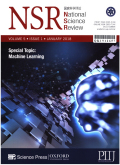- 钛学术文献服务平台 \
- 学术期刊 \
- 科教文艺期刊 \
- 科研管理期刊 \
- 国家科学评论(英文版)期刊 \
Ecological principle meets cancer treatment: treating children with acute myeloid leukemia with low-dose chemotherapy
Ecological principle meets cancer treatment: treating children with acute myeloid leukemia with low-dose chemotherapy
基本信息来源于合作网站,原文需代理用户跳转至来源网站获取
摘要:
Standard chemotherapy regimens for remission induction of pediatric acute myeloid leukemia (AML) are associated with significant morbidity and mortality.We performed a cohort study to determine the impact of reducing the intensity of remission induction chemotherapy on the outcomes of selected children with AML treated with a low-dose induction regimen plus granulocyte colony stimulating factor (G-CSF) (low-dose chemotherapy (LDC)/G-CSF).Complete response (CR) after two induction courses was attained in 87.0% (40/46) of patients receiving LDC/G-CSF.Post-remission therapy was offered to all patients,and included standard consolidation and/or stem cell transplantation.During the study period,an additional 94 consecutive children with AML treated with standard chemotherapy (SDC) for induction (80/94 (85.1%) of the patients attained CR after induction Ⅱ,P =0.953) and post-remission.In this non-randomized study,there were no significant differences in 4-year event-free (67.4 vs.70.7%;P =0.99) and overall (70.3 vs.74.6%,P =0.69) survival in the LDC/G-CSF and SDC cohorts,respectively.After the first course of induction,recovery of white blood cell (WBC) and platelet counts were significantly faster in patients receiving LDC/G-CSF than in those receiving SDC (11.5 vs.18.5 d for WBCs (P < 0.001);15.5 vs.22.0 d for platelets (P < 0.001)).To examine the quality of molecular response,targeted deep sequencing was performed.Of 137 mutations detected at diagnosis in 20 children who attained hematological CRafter two courses ofLDC/G-CSF (n =9) or SDC (n =11),all of the mutations were below the reference value (variant allelic frequency <2.5%) after two courses,irrespective of the treatment group.In conclusion,children with AML receiving LDC/G-CSF appear to have similar outcomes and mutation clearance levels,but significantly lower toxicity than those receiving SDC.Thus,LDC/G-CSF should be further evaluated as an effective alternative to remission induction in pediatric AML.

推荐文章
Low carbon storage of woody debris in a karst forest in southwestern China
Secondary forest
Fine woody debris
Coarse woody debris
Dead wood
Karst
Subtropical China
Ecological risk assessment of surficial sediment by heavy metals from a submerged archaeology harbor
Heavy metals
Eastern harbor
Enrichment factors
Degree of contamination
Potential ecological risk
Ecological stoichiometry of nitrogen, phosphorous, and sulfur in China's forests
Forest
Stoichiometry
Nitrogen
Phosphorous
Sulfur
China
Using Geomechanical Method to Predict Tectonic Fractures in Low-Permeability Sandstone Reservoirs
Low-permeability sandstone reservoir
Fracture parameters
Geomechanical method
内容分析
关键词云
关键词热度
相关文献总数
(/次)
(/年)
文献信息
| 篇名 | Ecological principle meets cancer treatment: treating children with acute myeloid leukemia with low-dose chemotherapy | ||
| 来源期刊 | 国家科学评论(英文版) | 学科 | |
| 关键词 | |||
| 年,卷(期) | 2019,(3) | 所属期刊栏目 | |
| 研究方向 | 页码范围 | 469-479 | |
| 页数 | 11页 | 分类号 | |
| 字数 | 语种 | 英文 | |
| DOI | 10.1093/nsr/nwz006 | ||
五维指标
引文网络
引文网络
二级参考文献 (0)
共引文献 (0)
参考文献 (36)
节点文献
引证文献 (0)
同被引文献 (0)
二级引证文献 (0)
1987(1)
- 参考文献(1)
- 二级参考文献(0)
1989(1)
- 参考文献(1)
- 二级参考文献(0)
1995(2)
- 参考文献(2)
- 二级参考文献(0)
1996(1)
- 参考文献(1)
- 二级参考文献(0)
2002(2)
- 参考文献(2)
- 二级参考文献(0)
2003(2)
- 参考文献(2)
- 二级参考文献(0)
2009(2)
- 参考文献(2)
- 二级参考文献(0)
2010(2)
- 参考文献(2)
- 二级参考文献(0)
2011(1)
- 参考文献(1)
- 二级参考文献(0)
2012(2)
- 参考文献(2)
- 二级参考文献(0)
2014(2)
- 参考文献(2)
- 二级参考文献(0)
2015(6)
- 参考文献(6)
- 二级参考文献(0)
2016(7)
- 参考文献(7)
- 二级参考文献(0)
2017(5)
- 参考文献(5)
- 二级参考文献(0)
2019(0)
- 参考文献(0)
- 二级参考文献(0)
- 引证文献(0)
- 二级引证文献(0)
引文网络交叉学科
相关学者/机构
期刊影响力
国家科学评论(英文版)
主办单位:
中国科技出版传媒股份有限公司
出版周期:
月刊
ISSN:
2095-5138
CN:
10-1088/N
开本:
大16开
出版地:
北京市
邮发代号:
80-671
创刊时间:
2014
语种:
eng
出版文献量(篇)
773
总下载数(次)
0
总被引数(次)
431
期刊文献
相关文献
推荐文献

 免费查重
免费查重










